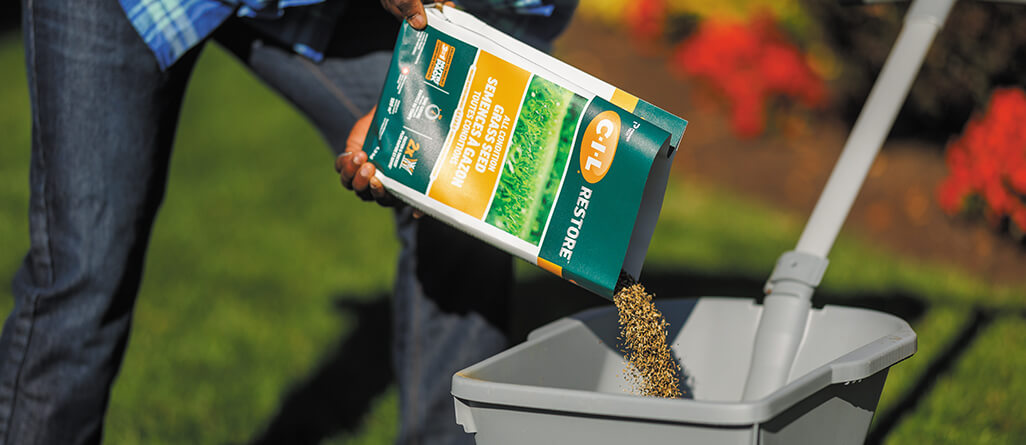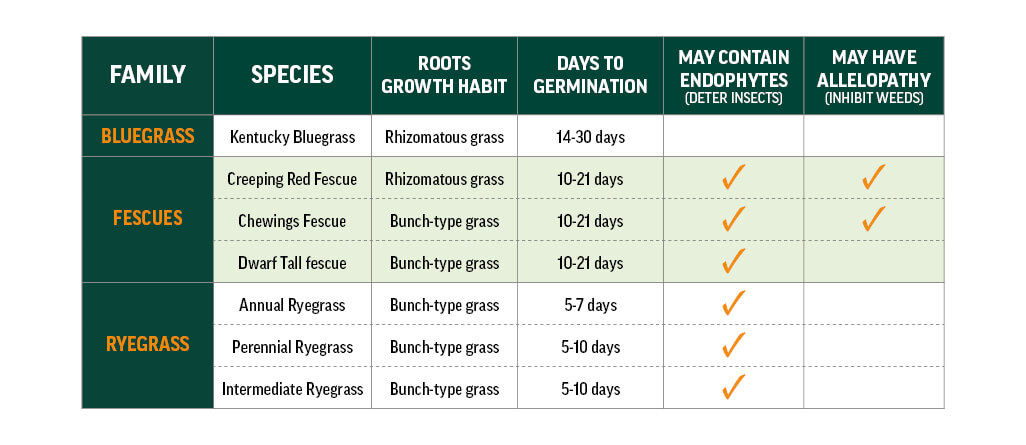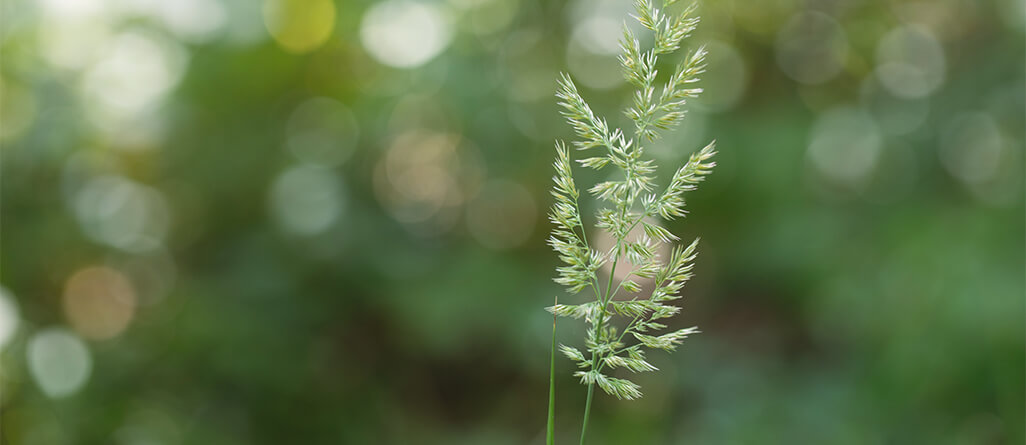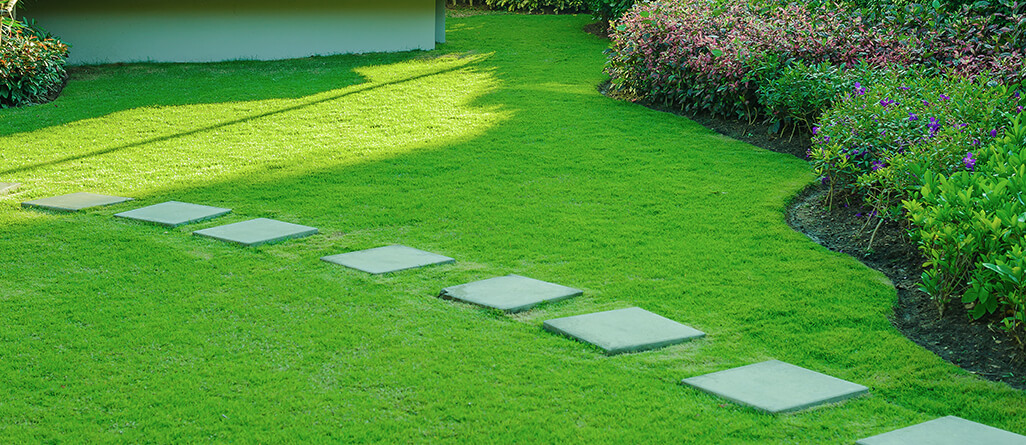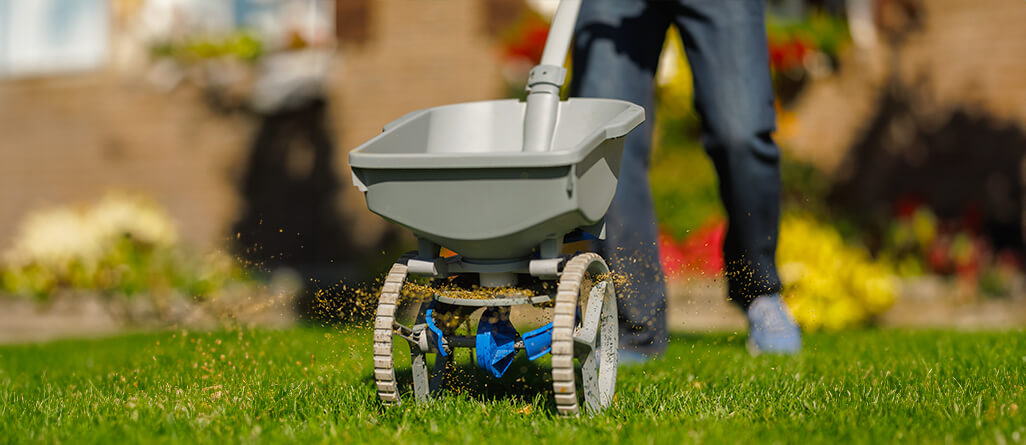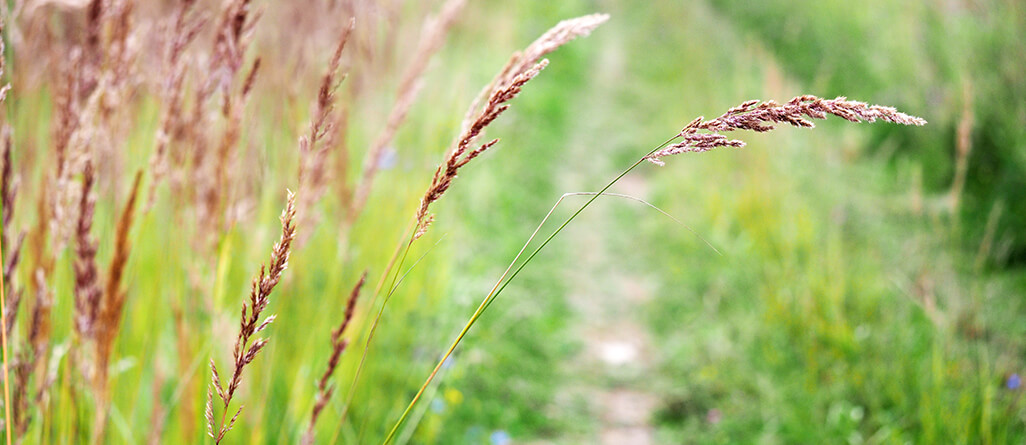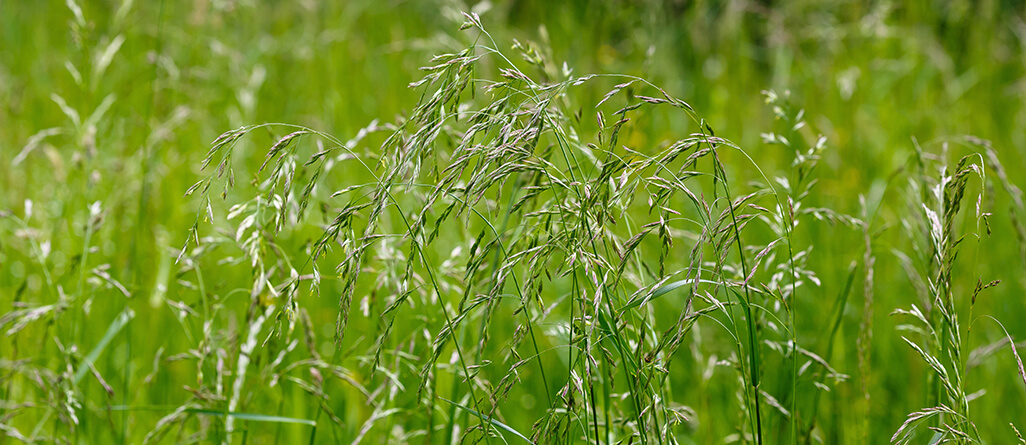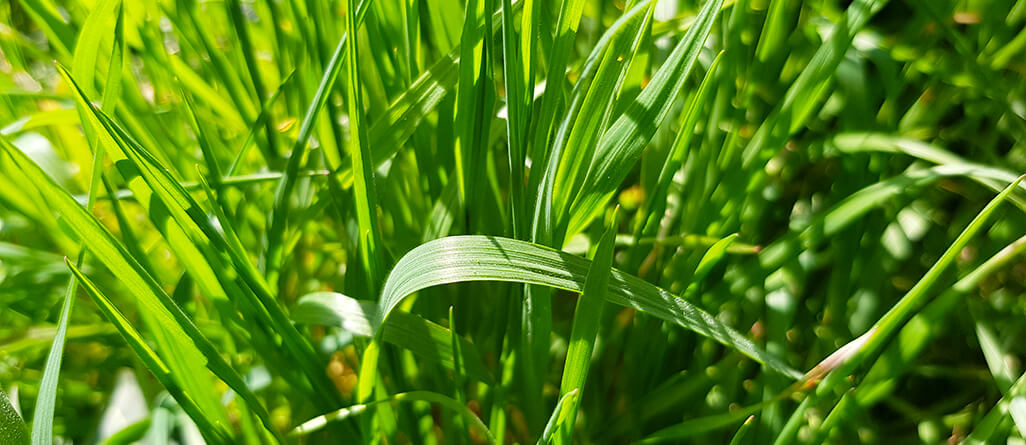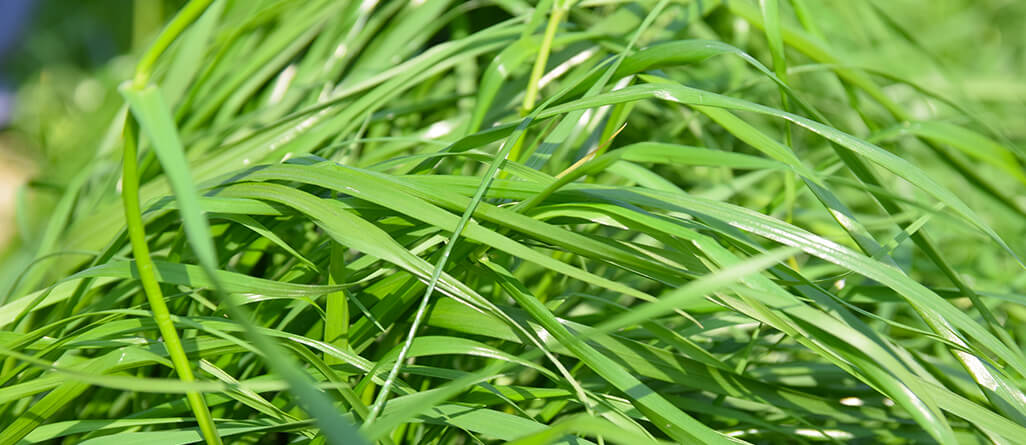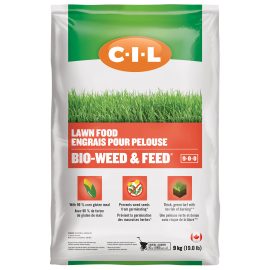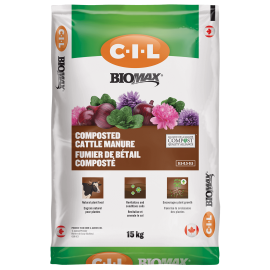How to choose the best grass seed for your lawn
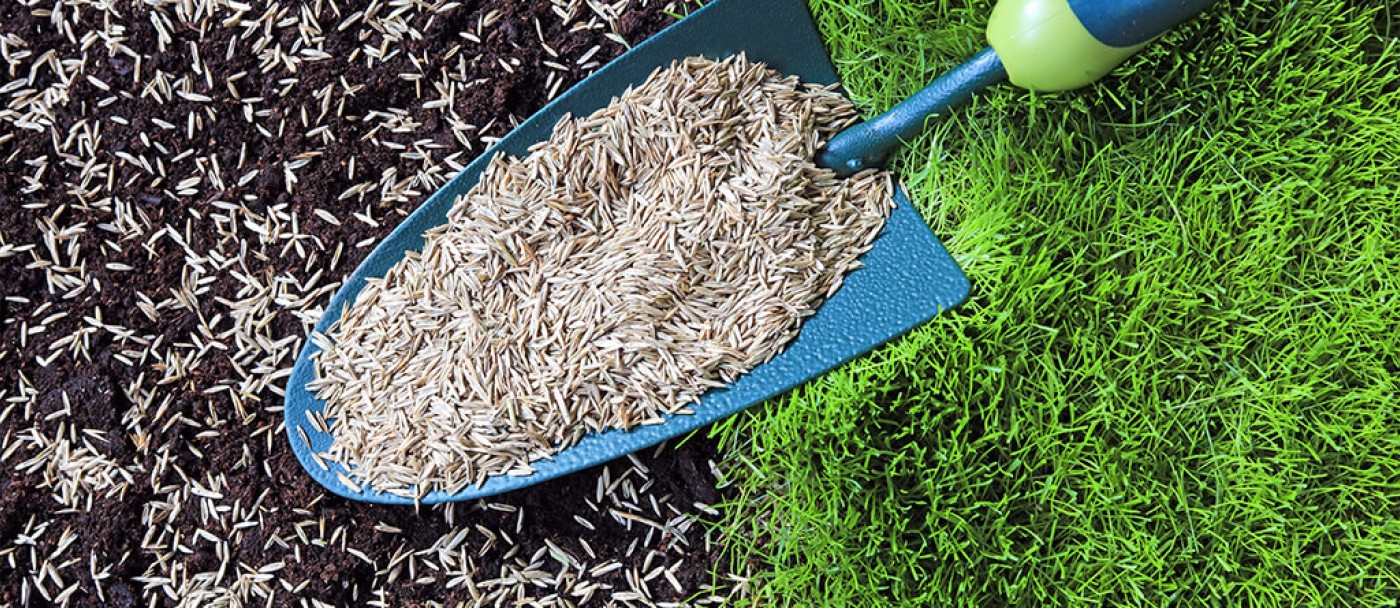
So, it’s time to patch or re-seed some areas in your lawn. You may find yourself in the grass seed aisle at the garden centre or DYI building store, looking somewhat confused after seeing all the different bags available.
Where to start? The abundance of brands and subtitles may not exactly explain the differences. What you really need to look for is the ingredient list of grass seed types on the label. Let us explain.
What you need to know about turf grasses
Let’s start with describing some of the terms used in our article.
Rhizomatous grass: Grasses that have a shallow root system. They grow by spreading lateral roots (called rhizomes) just below the lawn surface to find a bare spot away from the mother plant and start a new plant.
Although usually slower to germinate, once these grasses become established, they spread out rhizomes and help fill in bare spots. Think of nursery sod. It comes in a roll with only a minor layer of soil on it. In that thin layer of soil, you’ll find rhizomatous roots that will attach to your soil and grow. Not so with bunch types.
Bunch-type grass: As the name implies, a bunch-type grass plant grows entirely from its crown, in a single bunch and never wanders away from its established spot. These grasses expand only by growing new blades (called tillers) from the crown and do not spread out to fill in bare spots like rhizomatous grasses.
They simply crowd into neighbouring grasses as they thicken up. The roots will be deeper and generally have better drought and stress resistance. But you could never make nursery sod out of bunch-type grasses as you would be cutting off most of the root system.
Cool season/warm season grasses: For lawns in Canada and the northern United States, cool season grasses are what is always used. Lawns south of that are made up of totally different types of grasses called warm season grasses. These would never survive in our cold winter climate.
Endophytes: Natural beneficial fungus within some grass seeds that deters insects.
Allelopathy: Natural hormone in some species that keeps weed seeds from germinating.
Why prefer a grass seed mix?
The C-I-L grass seed mixes belong to 3 main families of grass seeds: bluegrass, fescue and ryegrass.
Mixing the 3 different grass species in a bag offers a fast, medium and slow germination. All 3 have different characteristics that complement each other to provide a lawn that can look good but tolerate stresses differently.
Most grass seeds available are blends of all 3 types.
The common grass seeds
The characteristics of the different grass seeds
Kentucky bluegrass: a sun lover that knits the lawn together
Kentucky bluegrass is an apomictic (i.e. capable of production of viable seeds without pollination or fertilization), strongly rhizomatous, cool-season and perennial grass. Kentucky bluegrass is one of the most popular turf grasses in Canada, forming a beautiful, lush, finely textured, high-quality and dense sod when grown in pure stands.
Grass colour ranges from bright green to deep bluish green. It’s considered widely adaptable and tolerant of many stresses, a trait that may be attributable to its highly apomictic nature.
Kentucky bluegrass grows by roots from single plants and at the same time sends out stems to form their own roots. This interweaves and supports the base, making it denser as it grows.
Kentucky bluegrass develops a shallow root system and is not a high drought-tolerant grass. It is the first grass to go dormant in dry situations. However, it can recover if watered intermittently, keeping the lawn minimally growing during drought.
Kentucky bluegrass does not do well in low-fertility soil environments. As most tender-bladed grasses go, it requires higher rates of fertilizer and water.
Bluegrass is often used in low to medium traffic areas and often incorporated with other grass species to produce a better multi-purpose lawn.
The Kentucky bluegrass in mixtures
Sod is usually made of 100% blends of Kentucky bluegrass varieties because of the characteristic of being so shallow-rooted. For seeding, Kentucky bluegrass also mixes well with companion cool-season grasses for greater diversity and longevity. It is one of the longest living perennial grasses grown.
However, Kentucky bluegrass is typically a minimally aggressive component grass seed in mixes. Additions of creeping red fescue, perennial ryegrass or annual ryegrass seeds are included in bluegrass for several reasons:
- Due to the slower growth of Kentucky bluegrass, full establishment takes time. This is one of the primary reasons to include other types of grasses, such as perennial ryegrass in a Kentucky bluegrass lawn. Perennial ryegrass will take off quickly, filling in while the Kentucky bluegrass slowly germinates, offsetting any weeds wanting to creep in.
- The addition of perennial ryegrass to Kentucky bluegrass seed helps to develop a tougher lawn that stands up better to wear.
- Prefers full sun: while Kentucky bluegrass is used in large amounts in commercial sun grass seed mixes, creeping red fescue is often added to provide shade tolerance to the mixture in areas where Kentucky bluegrass may not get enough sunshine.
The advantages of Kentucky bluegrass
- Naturally fills in open spots in lawns
- Grows in a wide range of conditions
- Resumes after stress and survives winter
- Best sustainable grass available
The inconvenient of Kentucky bluegrass
- Most susceptible type of grass to drought, disease and insects
FESCUES: a tougher, shade-tolerant grass
This category comprises fine and tall fescues.
The fine fescues
Creeping red fescue, Chewing’s fescue, hard fescue and sheep fescue are in the category of fine-leaved grasses defined as fine fescues.
Fine fescues perform well when used in cool-season grass seed blends with Kentucky bluegrass and perennial ryegrass. They germinate and establish faster than Kentucky bluegrass.
They stay green all year if maintained properly. They develop a deep root system and are eco-friendly as they require little maintenance - less water and fertilization. They will thrive in acid and poor soil conditions.
Fine fescues are classified into two complexes with very similar traits:
- Red fescue complex includes creeping red fescue. The species in this complex are typically rhizomatous, while Chewing’s fescue is a bunch-type grass. Both fescues are adapted to shade, drought and sandy soils with pH from 5.5 to 6.5.
- Festuca ovina complex includes hard fescue, sheep fescue, blue fescue. These grasses are also shade and drought-tolerant. Moreover, sheep fescue will tolerate a wide range of soil conditions, including low fertility and tolerance of coarse soils with pH from 4.5 to 6.0. Hard fescue needs more water than sheep fescue.
The advantages of fine fescues
- shade tolerance
- stays green all year
- very good drought resistance
The creeping red fescue
Creeping red fescue is one of the most widely used grasses in seed mixtures and to overseed cool grass lawns, germinating within 10-14 days.
Creeping red fescue can establish in the lawn quickly while the slower growing bluegrass is forming. This fescue variety is a non-aggressive and easily maintained grass and overseeds quite well in the areas of adaptation. Besides being a lawn cover, it is quite beautiful when left unmown in a meadow, on a roadside and on slopes or hill sides.
Creeping red fescue is distinguished from other fine fescues in that it spreads through a creeping growth habit. It creeps along by way of short underground stems called rhizomes, although somewhat less vigorously than Kentucky bluegrass.
Creeping red fescue is often added to dwarf tall fescue, bluegrass and perennial ryegrass mixtures and improves these mixtures by increasing shade tolerance. It also has fair drought resistance qualities.
The advantages of creeping red fescue
- Naturally fills in open spots in lawns
- Adapts well to drought and infertile soil conditions
- High tolerance to shady areas
- Contains endophytes
- Allelopathic properties
Chewing’s fescue
Chewing’s fescue is a bunch-type fescue that has the thinner leaves of the fine fescue group. As with all fescue grasses, Chewing’s fescue grows well in the shade, is drought-resistant, non-aggressive and blends well with almost any grass.
Chewing’s fescue is not as wear-tolerant as other fescue grasses but can be mown lower and prefers to grow on sandier soils with low fertility and high acidity. Chewing’s fescue grass seed will germinate in about 14 days.
The advantages of Chewing’s fescue
- Adapts well to a wide range of soils
- High tolerance to low temperatures
- High tolerance to diseases
- Contains endophytes
- With allelopathic properties
- Very hardy
Dwarf tall fescue
Dwarf tall fescue is a newer variation of tall fescues. In the past, tall fescues were not used in lawns as the blades were too thick and the plant too big to blend into a lawn.
However, grass breeders worked hard to maintain the hardiness qualities of the original, but developed a smaller “dwarf” type that blends well with lawns.
It is a perennial bunch-type grass that may or may not have short rhizomes. It has the best drought and heat tolerance of the cool-season turf grasses.
Several other characteristics make dwarf tall fescue well adapted to roadside conditions, including the abilities to thrive in soil pH ranging from 4.7 to 8.5, survive better in compacted soils than other cool-season grasses, and grow in alkaline and saline soils. It typically can be mowed from 1.5 to 3 inches.
The advantages of dwarf tall fescues
- Improved disease and insect resistance
- Good for high-traffic home lawns and shady areas
- Better drought tolerance
- Grows in either partial shade or sun (grows well beneath trees that shed their leaves in winter)
Ryegrass: the fastest germinating grass
Perennial and annual ryegrass are probably the most widely used of all grasses around the world for both forage and turf uses. Ryegrasses are cool-season, bunch-type grasses with a fibrous root system.
Ryegrasses are best known for rapid seed germination and establishment, and are often used as nurse grasses for the establishment of Kentucky bluegrass. For this reason, they are often used on home lawns, parks, golf courses, general landscaping areas and roadsides.
Ryegrasses will tolerate a wide range of soils but performs best on loam soils with high fertility. Ryegrasses are one of the few "throw and grow" seeds that can be sown without the hassle of tilling, scarifying or digging into the soil and destroying any of the permanent ground covers already in place.
Perennial ryegrass
Perennial ryegrass is one of the toughest and most traffic-tolerant turf covers that can be grown.
It is used in grass seed mixtures for these reasons:
- Quick germination, 7 days
- Erosion control
- Nurse grass for slow germinating grass seeds
- Very high wear tolerance
- Disease/insect tolerance
- Contains endophytes
Perennial ryegrass is noted for quick germination, shiny green colour, fine texture and forming thick lawns. It is a good choice to quickly repair damaged areas and can tolerate low mowing.
Perennial ryegrass is tolerant to winter and our cultivars can survive in Canada for many years as long as there is a good snow cover and winter is not too frigid.
High disease and insect resistance help to make perennial ryegrass one of the leading choices for lawn covers in the cooler regions. Many varieties have high endophyte contents that improve resistance to insects. It is used for the most in overseeding.
Perennial ryegrass seed is often added to Kentucky bluegrass seed to add strength and give bluegrass time to establish while the perennial ryegrass is in full growth. These two grass species can be mown at the same height and retain a sod density for which both are well known. Although bluegrass may require more fertilizer, the perennial ryegrass will respond to additional amounts without any damage.
Annual ryegrass
Used in grass seed mixtures, annual ryegrass offers these benefits:
- It usually germinates and establishes first, and improves early season weed control in less than 7 days.
- It is used as a nurse grass until the other grasses can be established, but should only be in very low percentages in a mix.
- It helps reduce erosion on slopes quickly.
Big drawback: annual ryegrass only has a one season life cycle and does not survive the winter. This limits its use to temporary ground cover. It doesn't have much of a market due to its poor turf quality and is often considered as weed.
Intermediate ryegrass
Intermediate ryegrass is a hybrid between annual and perennial ryegrass. Turf-type intermediate ryegrasses generally exhibit the growth pattern of annual ryegrass and the more desirable turf grass qualities of perennial ryegrass.
Therefore, the primary advantages are a lower price point and slightly faster establishment compared to perennial ryegrass and better turf quality than annual ryegrass. Intermediate ryegrass is also an excellent option for quick turf repair, but it is not tolerant to extreme cold.

